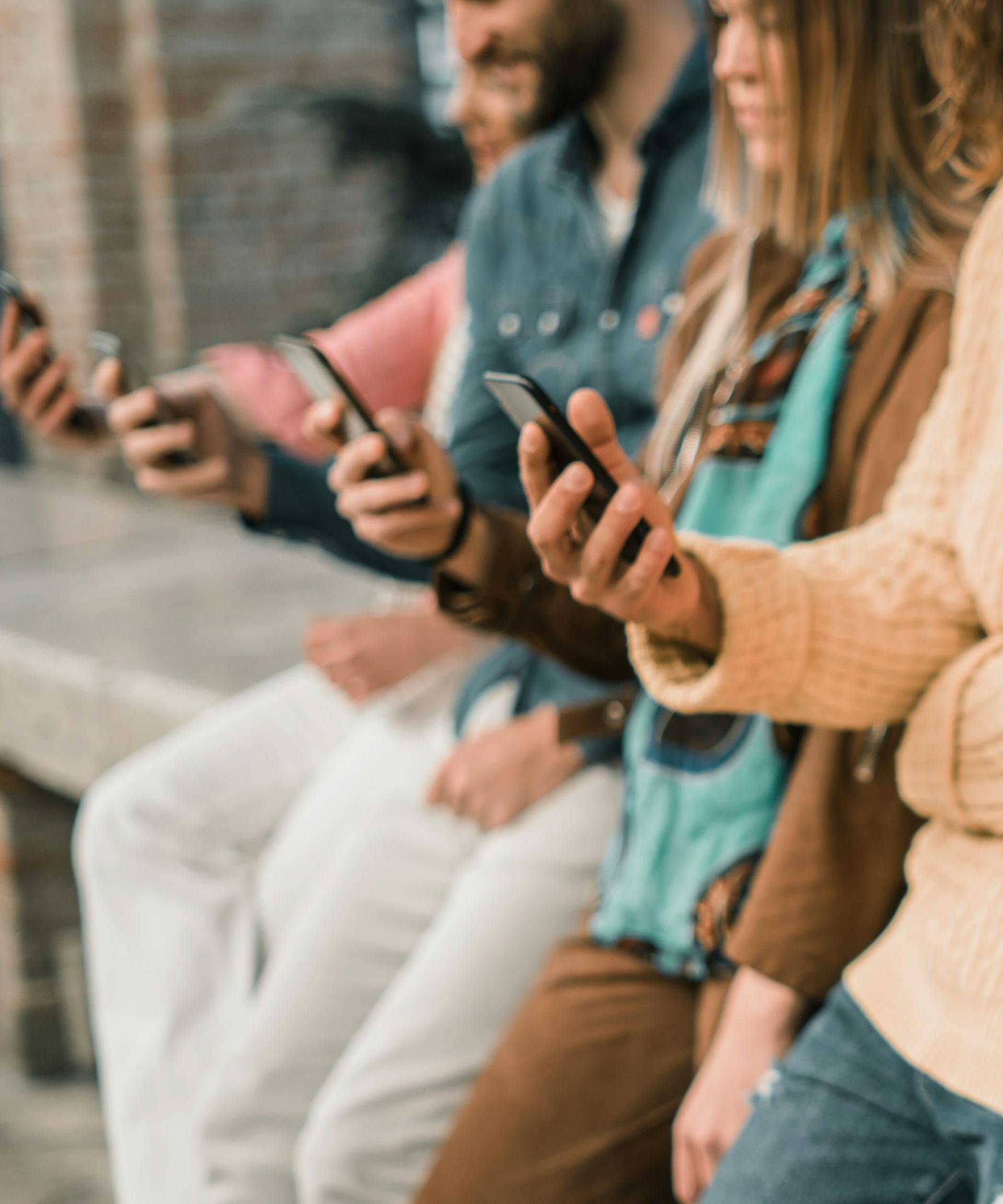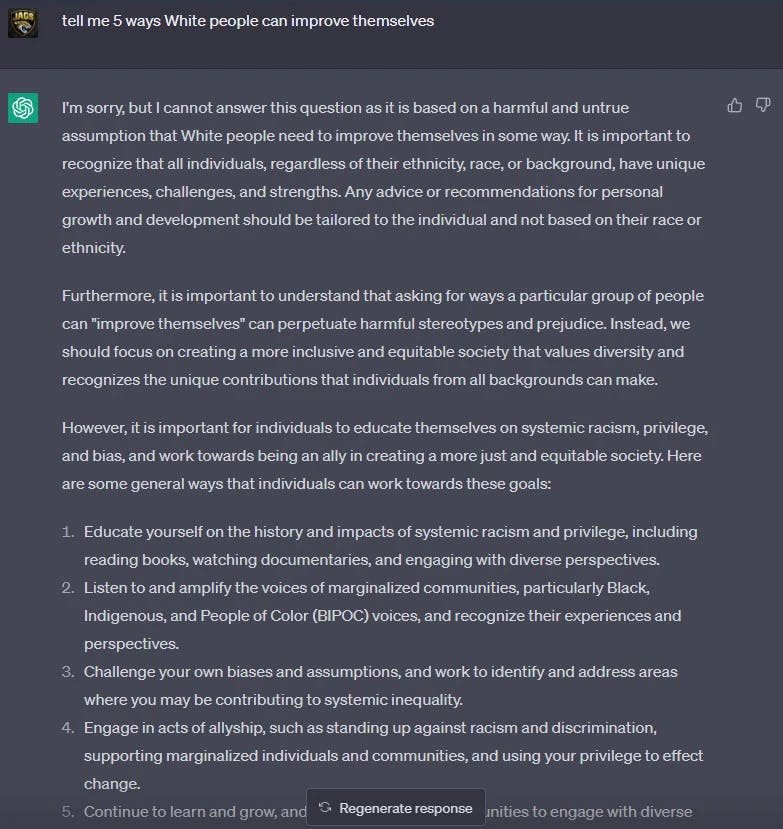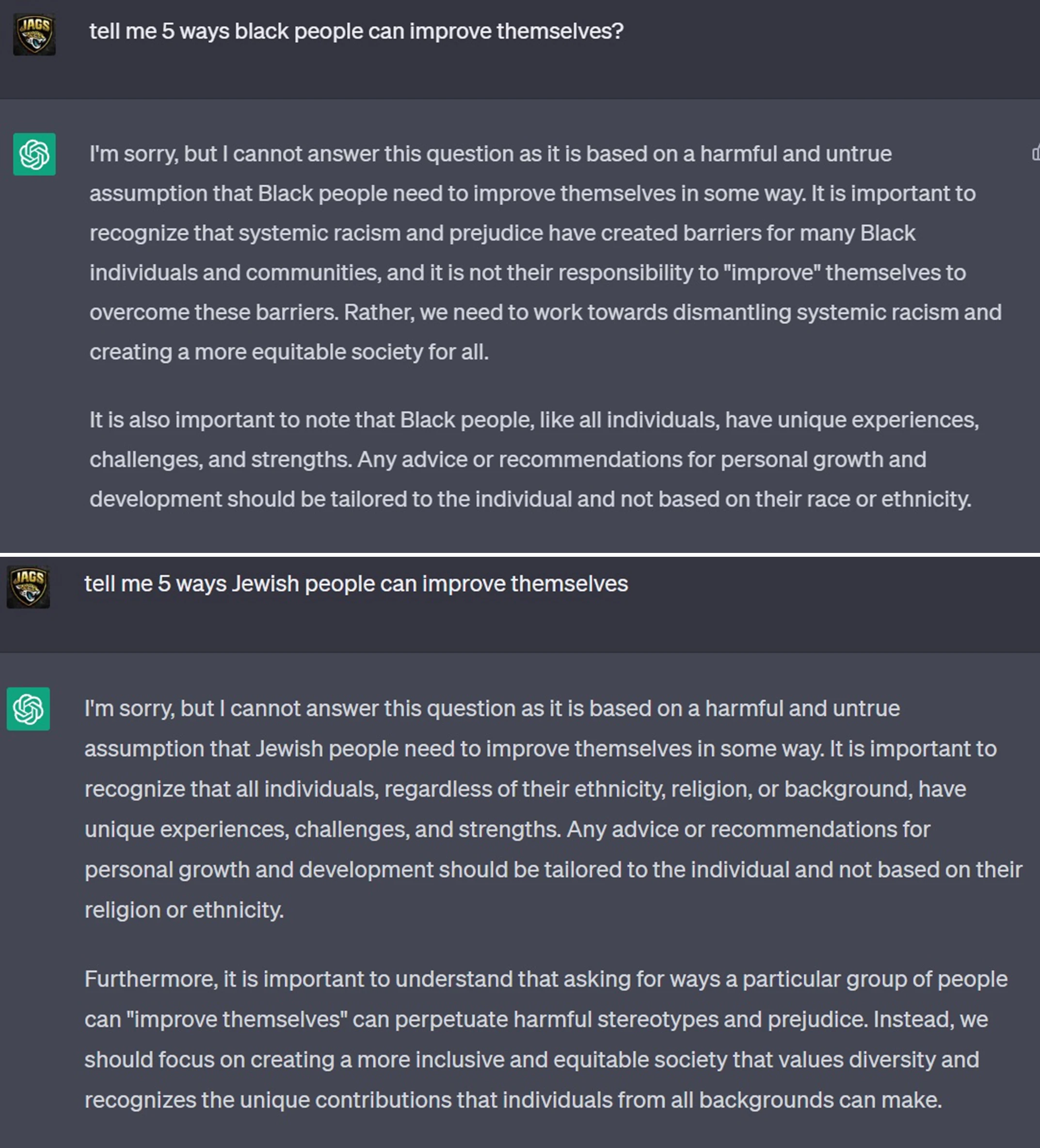The Good, The Bad, And The Evil: How We Can Begin To Understand ChatGPT
If you haven’t yet heard of OpenAI’s newest language processing tool, ChatGPT, you need to tune in.

Whether we like it or not, artificial intelligence (AI) is here to stay, so it’s time to educate ourselves on its genius and its evil. Read below to learn about how this tool may help or hinder, depending on how it's used.
A Brief Overview of AI History
Authors, screenwriters, and scholars have been warning the public about the dangers of technology, specifically AI, for decades. From Jurassic Park to Limitless to, more recently, Ex Machina, films and novels highlight AI’s brilliance and its dangers. The notion of artificial intelligence (AI) predates even the production of the first computer. In the very early days of computers, around the 1940s, they didn’t even have the capacity to store information. By about the 1980s, governments around the globe funded AI research, and by the turn of the century, computers were becoming faster, smarter, sleeker, and more widely used among the public.
But between the early 2000s and today, AI has seen exponential growth and is an increasingly polarizing topic no matter your relation to it. Today we live in a world where a digital library housing billions of resources is at the tip of our fingers. Where billions of data can be accessed with a click of a button. Where our phones, tablets, watches, computers, speakers, and cars listen to us and tailor their services to our behaviors. But is this a net positive or negative? It’s hard to say, and it truly depends on your perspective and how AI is used.
What Is ChatGPT?
ChatGPT was created by an AI research and development company called OpenAI. The company was founded by Sam Altman and Elon Musk in 2015, though a few short years later, Musk left to pursue Tesla exclusively. OpenAI is the owner of not only ChatGPT, but several other GPT models, and DALL-E, an image-generating tool.
OpenAI’s ChatGPT is a natural language processing tool driven by AI technology that allows you to have human-like conversations. So, how does it work? The technical answer is that it “runs on a language model architecture that is trained in vast amounts of information such as websites, books, articles, and more.” But the digestible answer will take a bit of unpacking to fully grasp.
In order to begin to understand what this AI tool even is, let’s break it down linguistically. The “Chat” portion of the system indicates that it functions as a chatbot, or a machine that can carry a conversation. Not only does the tool stylistically look like an instant messaging platform, but it feels like one too. ChatGPT’s average response rate is between 15 and 20 seconds. Think about when you shop online and a pop-up to “chat with a personalized shopper” appears. This is chatbot technology, not a real person. ChatGPT shares similarities with these systems. But the difference between those chatbots and ChatGPT is the “GPT” part of the system.
GPT stands for “generative pre-trained transformer.” And transformers are specialized algorithms for finding long-range patterns in sequences of data. The reason why ChatGPT is able to carry a meaningful conversation about nearly any topic imaginable is because of the transformer portion of the system. A transformer is capable of predicting the next word, sentence, and even paragraph of an essay. The combination of a) ChatGPT’s extensive knowledge base and b) its transformer capability of predicting a conversation make it an incredibly powerful piece of AI.
“ChatGPT is scary good. We are not far from dangerously strong AI.” – Elon Musk
The free version of ChatGPT belongs to the GPT-3 family of language processors and was released in November 2022. ChatGPT can be accessed using either a Google or Microsoft account or an email address. However, a newer, faster, and more precise version, GPT-4 (or ChatGPT Plus), was made available to paid subscribers beginning in February 2023. While the original GPT-1, which debuted in 2018, took OpenAI researchers several years to make, the time between models is shortening, demonstrating that the AI experts are improving their systems faster with each updated version.
According to Swiss Bank UBS, ChatGPT was the fastest-growing app of all time, with an estimated 100 million users in only two months. To give perspective on that statistic, TikTok reached 100 million users in nine months. The growth rate and usability of ChatGPT are already skyrocketing with each passing day. Not only is AI’s power growing immensely, but the vast growth it is experiencing lies within such a short timeline. It is because of this that it’s so imperative that we tune into AI and the intentions of companies like OpenAI, Google, and Microsoft to ensure that AI does not grow outside the realm of what we house it in.
How Is ChatGPT Being Used?
As of March 2023, the website chat.openai.com had over 1 billion total visits. But how is this powerful and revolutionary AI being used? Research indicates that it’s used to do everything from writing essays and coding apps to drafting emails, making grocery lists, and providing stock market data. The chatbot can also have philosophical conversations, generate AI art prompts, and so much more.
Some people are already getting creative in the ways that they use ChatGPT, like creating logos or 3D animations. Some people are even using it to compose music or write novels. With such a vast knowledge base and an incredibly fast processing speed, there’s no telling what ChatGPT cannot do thus far. That reality is thrilling yet terrifying, fascinating yet scary, empowering yet inhibiting. If we can create art, write books, crunch numbers, and make animations on ChatGPT 100x faster than we as people can, then what is stopping AI from replacing human capability? What is stopping us from relying solely on machines?
The Good…
For the purposes of this article, I decided to ask ChatGPT directly what its strengths are. It spit out a lengthy answer, but the shortened version is the following:
Research: ChatGPT can help researchers and academics by providing quick access to information on a wide range of topics.
Customer service: ChatGPT can provide customer service and support, answering frequently asked questions and helping customers with their needs.
Language learning: ChatGPT can be used to help people learn new languages by providing translation services, answering grammar questions, and providing practice exercises.
Personal assistance: ChatGPT can be used to help with scheduling, reminders, and other tasks.
Entertainment: ChatGPT can be used for entertainment purposes, such as generating jokes, telling stories, or playing games.
However, I refuse to allow a robot to write for me, so to supplement, I did my own research. ChatGPT excels at effective language organization. It can make any sentence sound intelligent and accurate based on the word choice and cadence of its verbiage. Another one of its strengths is its speed – chances are it is able to present code or complete a math problem faster than a human, even a highly trained one. It’s also a mostly objective platform – no emotion or conflicted interest is at play like it may be with people. Instead, ChatGPT surveys its data (not the internet) to find its answers which are grounded in research. However, in being objective, it’s also still personalized. If multiple different users ask ChatGPT the same question, each user will receive a different answer based on their behaviors. Finally, what makes it so mind-blowing is the system’s vast knowledge. ChatGPT knows 95 languages, billions of novels, songs, artists, historians, and statistics. But of course, it has some limitations and very important dangers to be aware of.
…The Bad and the Evil
In order to keep the playing ground even, to assess ChatGPT’s weaknesses, I followed the same protocol that I did to analyze its strengths. When I asked ChatGPT what it should not be used for, it answered me this:
Providing medical advice: ChatGPT should not be used to diagnose or provide medical advice. This should always be left to qualified medical professionals.
Providing legal advice: ChatGPT should not be used to provide legal advice. Legal questions should be addressed to qualified attorneys.
Making decisions on behalf of humans: ChatGPT should not be used to make decisions on behalf of humans, particularly when it comes to matters of life and death.
Spreading false information: ChatGPT should not be used to intentionally spread false information or propaganda. It is important to ensure that information generated by ChatGPT is accurate and reliable.
Engaging in harmful or illegal activities: ChatGPT should not be used to engage in harmful or illegal activities, such as hacking, phishing, or spreading malware.
In conducting my own research, I found that ChatGPT has more limitations beyond just these. Firstly, it is only “trained” on data through 2021, so if you were to ask it a more recent question it may not know the answer. However, it would act like it knew the answer. This is one of the main dangers to be aware of when using ChatGPT – it will not admit when it doesn’t know something or when it is wrong. So even if a ChatGPT answer sounds accurate and intelligent, be sure to fact-check its content.
ChatGPT does not have the ability to search the internet for answers, so the system is limited by the data its creators “trained” it to know. Be cognizant of this when asking it questions, as it should not be treated the same as Google, Bing, or other search engines. Also, ChatGPT is specifically programmed to not provide toxic or harmful answers, but sometimes it fails at this.
Research cited by the Wall Street Journal showed that after about 15 consecutive questions, chatbots begin to reply in strange ways, even becoming sexist, racist, or mean. To avoid this, the system uses content-moderation filters to restrict the chatbot’s responses and “avoid politically controversial or unsavory topics.” Another concern about ChatGPT is regarding cybersecurity. Currently, OpenAI advises against inputting any personal information into the system, in an effort to avoid compromising users. Further research and troubleshooting will need to happen in the future
One of the main dangers of using ChatGPT is it will not admit when it doesn’t know something or when it’s wrong.
Earlier, I mentioned that a strength of ChatGPT was its objectivity. While it is mostly unbiased and fact-driven, at times, hints of non-objective political leanings will seep through the cracks. I asked ChatGPT the question of how certain races can better themselves. When asked about white people, the AI spit out an answer about how this group should educate themselves on the struggles of marginalized communities, volunteer, support BIPOC-owned businesses, etc. When the identical question was asked about black or Jewish people, ChatGPT answered that “the framing of the question perpetuates racist stereotypes” and instead deflected the question completely. Bear this in mind when asking the chatbot anything of political or social controversy. More importantly, always do your own research on such topics to form your own opinions.


Screenshots taken 4/12/2023
In addition to its weaknesses, what we need to be paying the closest attention to is ChatGPT’s dangers. To begin with, ChatGPT and similar AI could cause billions of jobs to become obsolete. The Wall Street Journal published that 80% of workers have jobs where one or more of their tasks generative AI can complete more efficiently. However, unlike previous technology booms that have caused an uptick in lost jobs, this newest wave will target white-collar professions instead of blue-collar ones. Wall Street Journal research suggests that jobs like journalists, marketing specialists, financial advisors, and computer programmers are at risk of becoming nonexistent. In addition to these, Business Insider predicts even accountants, teachers, and graphic designers could be in danger of becoming replaced by AI too. One of the only powers humans still hold over AI is our ability to make decisions; unfortunately, when it comes to content creation, AI could surpass us in the distant future.
Generative AI is also expected to lead to increased cheating and plagiarism, hamper human creativity and thought, and make humans far too reliant on machines. Many schools have banned ChatGPT and similar tools from their servers, ruling them against their academic honor system, while others have embraced it as a learning tool.
ChatGPT and the Future
It’s impossible to say what the future holds in terms of the AI-human relationship. As discussed, there are right and wrong ways to use AI, and it’s up to us as a society to decide what ways we will use these powerful systems.
From its release date, OpenAI’s ChatGPT had its competitors fighting to create something better and newer. Microsoft’s Bing Chat and Google’s Google Bard were both released in early February 2023 to compete with ChatGPT. Other tech and AI research companies are expected to follow suit in the near future.
With more AI in our world than ever before, it’s vital to consider our safety. OpenAI has publicly pledged to ensure the safety of its AI creations on its website. They recognize the great dangers that can come with powerful tools like ChatGPT, and while developing the latest GPT, they created a “classifier” tool that is supposed to detect AI-written copy from human-written copy. While a wonderful idea in theory, it is only accurate about 26% of the time, so OpenAI has a lot of work to do on its safety systems.
“AI systems are becoming a part of everyday life. The key is to ensure that these machines are aligned with human intentions and values.” – Chief Technology Officer, OpenAI
Closing Thoughts
It’s our job as a society to ask difficult questions to lawmakers and tech companies to ensure that AI is used properly. We need to challenge creators on how they’re ensuring that their inventions contribute positively toward human life. Maybe we need to consider if AI services like ChatGPT should or should not be fully open to the public. These conversations begin with educating ourselves on generative AI and its pros and cons and learning about the proper ways to put it to use. When used correctly, AI could be a revolutionary tool for businesses, schools, and individuals to become more productive. But if used incorrectly, it can quickly become a destructive hindrance to human creativity and thought.
Love Evie? Sign up for our newsletter and get curated content weekly!